Understanding Water Survival
Water is both friend and foe. Even though sips from a cold spring can be refreshing during a hike, being immersed in water can be dangerous for...
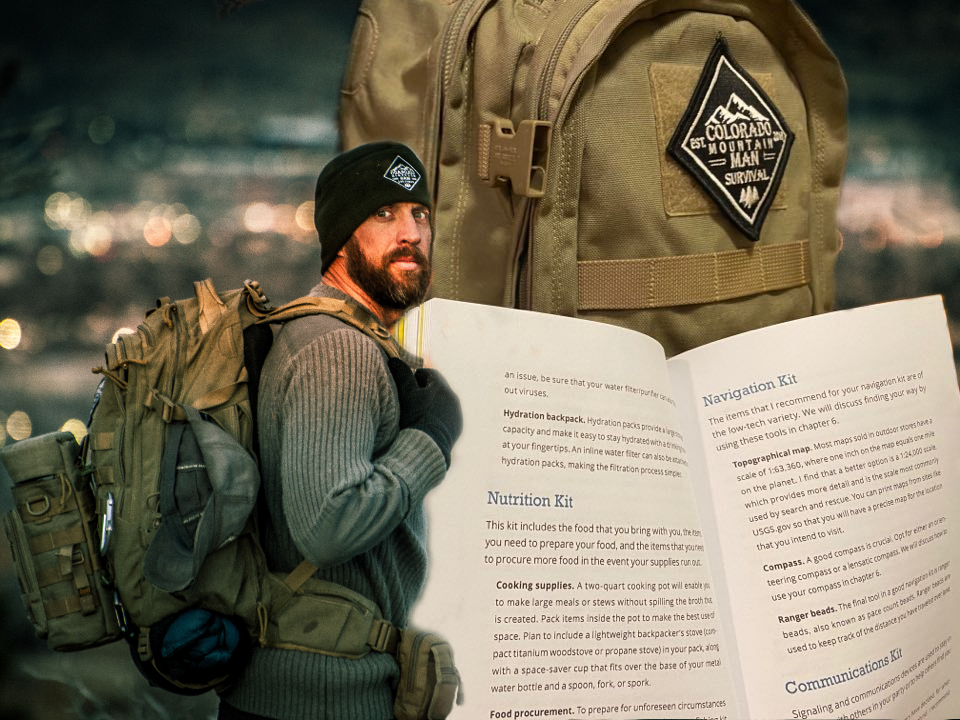
Survival kits are portable packages containing essential items and supplies that are designed to help individuals survive and stay safe during an emergency or disaster situation. The contents of a survival kit can vary based on the intended use or specific scenario, but typically include items such as food, water, shelter, first aid supplies, tools, communication devices, and personal hygiene items. Survival kits can range from small, lightweight kits meant for short-term emergencies to larger, more comprehensive kits designed for longer-term survival in extreme environments. The purpose of a survival kit is to help individuals meet their basic needs and increase their chances of survival during a crisis.
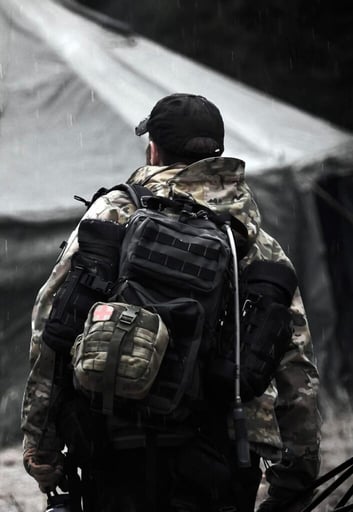
I have always had some sort of “survival kit” for as far back as I can remember. Even as a teenager growing up in a small mountain town these things were a part of me. I wasn’t a prepper or survivalist or anything of that nature. It was just a way of life. Back then I didn’t know any of it had a name. It’s just what we did in a small mountain town. However, what got me into this industry is survival kits. Over 12 years ago, when I became aware that “survival and prepping” were what all the cool kids were doing, I began doing research on this very topic. In 2010 survival shows like Dual Survival became a hot item and for some reason bug out bags and 72 hour kits were increasing in popularity.
I already had many skills and a survival kit but my research pointed me in the direction of many lists of gear, cool looking items and prefab survival kits. These prefab kits were put together by “professionals” so I figured what they had to offer would be better than what I had. So I ordered several of them for myself and my family to supplement our kits, with the expectation that what I would receive would be vastly better than what I had already. Boy was I wrong!
Every single prefab kit that I received either had something in it that was already broken or that I felt was completely useless. You will figure that out quickly if you ever try to use one of the collapsible plastic snow shovels that come in a winter car kit, or a super inexpensive solar charging device with 15 different survival tools built in. With my knowledge and experience, I found that I already had a better kit and could offer my experiences to help people avoid the mistake I had just made by ordering prefab kits from what I thought was a trusted source. Through this, Colorado Mountain Man Survival was born and has evolved into The Survival University.
There are several common survival kits and they all have a unique purpose. In this article I will make a personal analysis of each general type of kit, what I believe they are commonly used for and what my opinion is of each type of kit. This article does not delve deep into the contents of every kit but rather is intended to get you thinking about where you are in this realm of emergency preparedness and to get you to think about what you might need to change about your kit and yourself.
Before I get going further, I will say that you should learn how to use everything in your kit. If you don’t know how to use it, what is the point in having it? Don’t just go buy something to check a box on a list that you found on the internet and then throw it in a bag in your closet to be forgotten until disaster strikes. When a disaster does strike, it is not the time for you to be reading an instruction manual or figuring out how to use some tool that you bought months ago.
Beware gimmicky items! The emergency preparedness industry is chalked full of them. You know, the Shake Weight and Slap Chop of the survival world…. Ooooohhh aaaaaahhh! Queue audience golf clap sounds! There could easily be a multiyear series of gimmicky survival items to showcase on As Seen on TV. It astounds me some of the items I see out there. If there is a goofy video ad about this item, it probably falls into this realm.
The most important things that you should know is that quality is essential in times of emergency and that training trumps gear! You do not want your life saving device to fail you when you need it the most and you will need to know how to use it quickly and effectively.
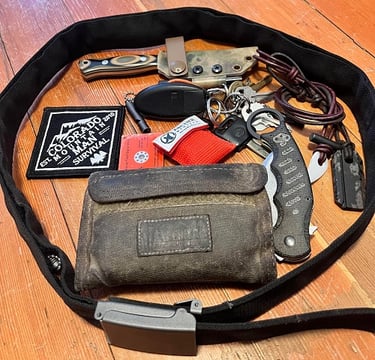
This is a very short term survival kit, or perhaps a long term kit depending on how you look at it and your skill level. It is one that we all carry all the time. We all typically have an everyday carry, some of us just may not recognize that we do so. Some EDC’s might involve a lint covered Tic Tac at the bottom of a bag.
EDC stands for “Everyday Carry” and refers to the items or tools that a person carries with them on a daily basis for convenience, preparedness, or personal protection. EDC items can include things such as a wallet, keys, phone, multi-tool, flashlight, pocket knife, pepper spray or other self defense tool and other small, portable items that are useful in everyday situations. The contents of an EDC kit can vary based on the individual’s needs and preferences, but generally include items that are practical, versatile, and compact enough to be carried comfortably in a pocket, purse, or bag. The purpose of an EDC kit is to help individuals be prepared for unexpected situations and have the tools they need to tackle daily tasks or emergencies.
If you always walk out the door and head to a destination with nothing in your pockets other than credit cards and ID, then I urge you to consider making some of the simple tools mentioned above a part of your everyday carry. They are lightweight and do not take up much room but in an emergency situation they could be vital.
For example, on just my truck keyring I carry a CPR mask, whistle, fire starter and a tiny knife. Around my neck I carry a fire starter necklace and a sharpening stone. I always have either a pocket knife or a bushcraft knife on me somewhere. My wallet has a few credit card survival sized tools in it as well. Depending on my daily task I either have a leather belt or a Wazoo Cache Belt that has some basic survival items hidden within.
A paracord bracelet survival kit is a compact, wearable kit that contains essential survival items woven into a paracord bracelet. Paracord is a durable type of cord originally used in parachutes, but has since become a popular material for outdoor enthusiasts and survivalists due to its strength and versatility.
A paracord bracelet survival kit typically includes a variety of small tools and materials that can be useful in emergency situations, such as a Firestarter, compass, whistle, fishing line and hooks, wire saw, and even a small knife or cutting blade. These items are discreetly woven into the bracelet itself which should be made out of 550 paracord, allowing the wearer to have them readily accessible at all times.
Paracord bracelet survival kits are popular among hikers, campers, and survivalists who prioritize lightweight, compact gear that can easily be carried with them at all times. They are also great for those who want to have a backup survival kit on hand, in case they become separated from their main kit.
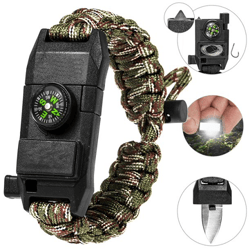
While these bracelets can be useful, I find them to be on the gimmicky spectrum. They fit just fine in the EDC category but they should not be considered a complete survival kit. Don’t let a few items on your wrist give you a false sense of security. The tools are small and difficult to handle if your hands are cold or injured. Typically the survival tools hidden within are cheaply made and may break easily or not work at all. If you are going to wear one, make it a quality one with quality tools inside. Also make sure that the paracord is true 550 cord. If you don’t know what 550 cord is, then watch my video on YouTube.
My personal opinion is that paracord bracelets are more of a psychological tool. They force you to stop, sit down, unravel your bracelet and assess your gear and your situation. Calming yourself and thinking can be vital in an emergency situation. Focusing on the task of getting your tools out of the bracelet may do just that.
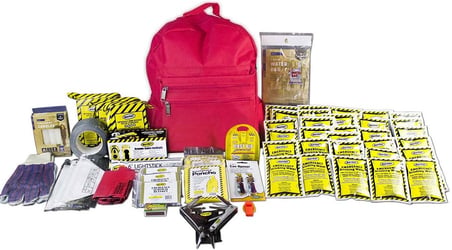
A 72 hour kit, also known as a 3-day kit, is a type of emergency preparedness kit that contains essential supplies to sustain an individual or family for up to 72 hours in the event of an emergency or disaster. These kits typically include items such as food, water, emergency shelter, basic first aid supplies, personal hygiene items, basic household tools and other items to survive for at least three days. The purpose of a 72 hour kit is to provide immediate assistance and support until further help arrives or until it is safe to return home or seek additional resources. It is recommended that every household have a 72 hour kit readily available in case of an emergency.
This is the kit that FEMA and other government agencies recommends everyone has in their home or vehicle at all times. The 72 hour kit assumes that help is on the way fairly quickly and the users of these kits are relying on others to eventually come save them.
Because the government has recommended these kits, many emergency preparedness companies exist and are capitalizing on the situation. The kits on the market seem to be created by someone with little to no real world survival or disaster experience. The tools in the prefab kits are cheaply made and will probably only last you three days before they break. The food and water rations are only designed to last you 3 days if you are just sitting around waiting for someone to help you. If you are exerting yourself, these rations will deplete much quicker. As mentioned before, I have purchased many of these survival kits just to see what they were about and I was thoroughly unimpressed with all of them.
If you have received any formal training, you will see how inadequate these kits are. They have the bare minimum to get through a small crisis and should anything else go slightly wrong, you will not be properly prepared. These kits are just not suitable for anybody that intends to do anything other than lay there and wait for help and should be supplemented with other kits or improved upon greatly with additional items. Better yet, don’t buy these prefab kits. Build your own!
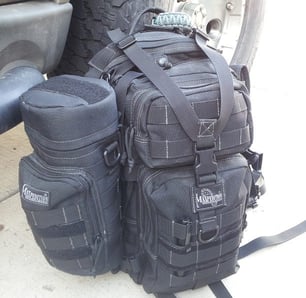
A get home bag is a type of emergency preparedness kit that is designed to help an individual get home safely during an unexpected event or emergency situation, such as a natural disaster, transportation breakdown, or civil unrest. This survival kit typically contains essential supplies that can help an individual travel a relatively short distance from their current location to their home or another safe location. The contents of a get home bag can include items such as food, water, first aid supplies, emergency shelter, a map, compass, flashlight, hiking boots and extra clothing. The purpose of a get home bag is to provide an individual with the necessary resources to make it home safely, even if they are not able to access their regular modes of transportation or usual supply of resources.
Everyone should have one of these kits in their vehicle or office at all times. When you put together this kit, think about what you would need to keep in your vehicle to spend at least one night sleeping in it. Then think about what you would need in the kit to walk home in inclement weather. If your typical commute to work is 80 miles, then the contents of your kit may be different than a person’s kit that would only have to walk 10 miles.
This is the kit that all of us will most commonly use. These situations happen all the time, especially during the winter when highways are shut down due to blizzards and people are stranded in their vehicles for hours, if not days on end. So you should really put some thought into this kit when you are putting it together. Think about the situations you might face, the environment you will be exposed to, the distance you will need to travel, injuries that you might receive and of course think about your skill level.
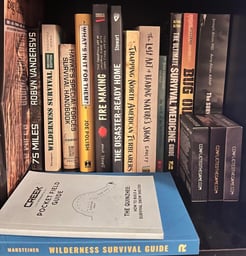
Okay, there usually is not a bag directly associated with bugging in but there are kits involved so I will talk about it. Bugging in refers to the practice of staying at home or a fixed location during an emergency or disaster situation, rather than evacuating or “bugging out” to another location. The decision to bug in may be made based on a variety of factors, such as the severity and duration of the emergency, the availability of resources, the safety of the surrounding area, and the ability to shelter in place.
People that bug in may have medical or physical conditions that do not allow them to travel far outside of their home or they simply have no desire to bug out or evacuate. This is a very common thing and if that is your stance, there is nothing wrong with it other than the fact that there might come a point in time where you will either be forced to bug out or suffer the wrath of the disaster that is bearing down on you.
Bugging in often involves preparing and fortifying the home or location with supplies, equipment, food, water, medical supplies, communication devices, and security measures. The goal of bugging in is to increase the chances of survival and safety by remaining in a familiar and secure environment, rather than risking the unknown challenges and dangers of bugging out.
There seems to be a constant battle between “bug inners” and “bug outers”. Each group feels their idea is better. I have seen very heated debates about this topic. People get very angry at each other and I can’t really figure out why. I usually just sit back, grab the bag of popcorn and watch the sparks fly. Everybody has different goals or limitations. If you want to bug in, bug in! If you want to bug out, bug out!
Rant over.
A bug-out bag, also known as a go-bag, is a portable survival kit that contains essential supplies to sustain an individual for a short period of time during an emergency or evacuation situation. The contents of a bug-out bag can vary depending on the specific needs of the individual, but commonly include food, water, shelter, clothing, first aid supplies, communication devices, and personal hygiene items. The purpose of a bug-out bag is to allow individuals to quickly and easily evacuate from their homes or workplaces during an emergency situation, such as a natural disaster or civil unrest.
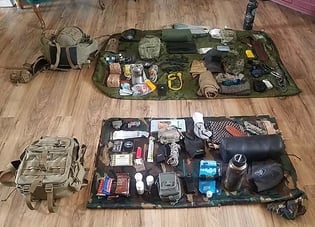
If a bug out bag is your survival kit of choice then I feel you should have a bug out location to go to or at least a solid plan in place. The contents of this kit are meant to sustain you as you travel from point A to point B. Also my thought on this kit is that you eventually intend to return home in the somewhat near future. This kit should have necessary survival gear as well as important documents that you may need and perhaps small family heirlooms or objects of meaning that you do not wish to lose .
Many bug out bags are not optimized for practical use, as my experience with consulting individuals on building their bug out bags has shown that some owners tend to pack too many items into them. This could be due to a lack of formal training on how to build a functional bug out bag. Instead of relying solely on gear, it’s essential to have knowledge and training to manage different situations effectively.
Some individuals may have done some research online and gathered all the items recommended without putting much thought into it. Consequently, their bug out bag ends up being overly heavy, containing unnecessary redundancies, and lacking in essentials they may need. While phrases like “one is none and two is one” and “something is better than nothing” may hold some truth, they shouldn’t be taken to mean that overpacking is necessary.
Proper training can help you optimize your bug out bag with the essential items that meet your unique needs, making it practical and useful in emergency situations. It’s always better to have the necessary knowledge and training rather than relying solely on gear to help you through a sticky situation.
Wait! What? Don’t listen to some of these sayings. Just don’t! Having two of every item is just not practical and not necessary if you have quality tools. This might be relevant for a permanent location or situation where you have a vehicle but not for a survival kit that you are carrying on your back.
And having “something” just to fill a role gives you a false sense of security. If that something is cheaply made, it’s going to break on you when you need it the most. Many people will disagree with me but I digress.
I do carry some redundancies on key items such as fire starting tools and knives but these items are very well thought out. Among similar sayings, the one that resonates with me is “Buy once, cry once.” That means, do your research and buy quality gear. That doesn’t mean that you need to buy the most expensive gear out there but find gear that has been tested by individuals that aren’t just trying to make a quick buck off of you.
I’ve found that individuals who have put in the effort to thoughtfully curate their bug out bag and receive formal training usually progress to the next level of preparedness: the INCH bag.
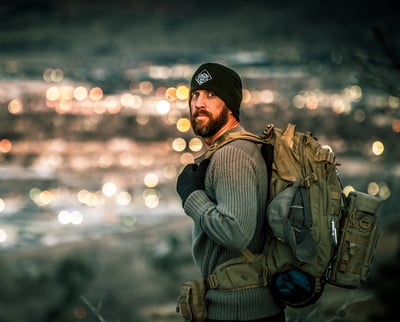
An INCH bag (I’m Never Coming Home bag) is a type of survival kit or bug-out bag that is designed to support an individual or group of individuals for an extended period of time, often indefinitely. It contains a wide variety of items that can be used for self-sufficiency, shelter, clothing, bushcraft tools, medical supplies, tools to procure food, and tools to purify water. The idea behind an INCH bag is that it is intended to be used in situations where a person does not plan to return home, such as during a long-term disaster or societal collapse. The person carrying it realizes that the tools in the bag should be carefully selected and that things like food and medical supplies will run out. Their training allows them to improvise, forage or scavenge off the environment and they can travel fairly lightly with minimal gear.
This person probably has a solid plan in place, a destination and a network of individuals that they intend to link up with. They have most likely trained extensively on every item in their INCH bag and are proficient with every tool within.
This should be the goal of everyone that possesses a survival kit and intends to “bug out”.
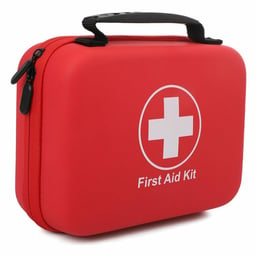
A first aid kit is a collection of medical supplies and equipment that is used to provide initial medical care for minor injuries or illnesses. The contents of a first aid kit can vary depending on the intended use, but typically include items such as bandages, adhesive tape, antiseptic wipes or solutions, gauze pads, gloves, scissors, tweezers, and a first aid manual. First aid kits can be purchased pre-made or assembled by an individual based on their specific needs and intended use. The purpose of a first aid kit is to provide basic medical treatment and care to individuals who have been injured or are experiencing an illness until further medical attention can be obtained, if necessary.
When I hear first aid kit it, for me it drums up the vision of a plastic box you can find in most department stores that contains 499 items, and 475 of those items are Band-Aids. 450 of those Band-Aids are so small that you aren’t even sure what you would do with them. Maybe stick it to your face to cover a pimple? I don’t know?!?
Even the best of the prefab outdoor first aid kits only have items in it to help with little booboos. I’m being a little facetious but perhaps we should call first aid kits just that…booboo kits. If you are into the survival kit mentality, you can do better than that.
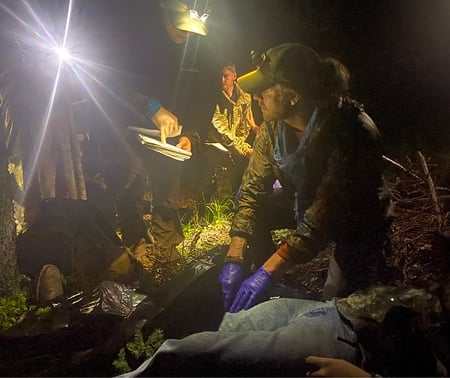
When it comes to first aid, this should be where your mind is at. A trauma kit is a specialized type of first aid kit that is designed to provide immediate medical care for severe or life-threatening injuries, such as gunshot wounds, severe bleeding, or major burns. Trauma kits are often used by emergency medical professionals, law enforcement officers, military personnel, and other individuals who may encounter situations where advanced medical care is not immediately available. However, you do not have to be in one of those professions to have a trauma kit and know how to use it.
The contents of a trauma kit typically include items such as tourniquets, hemostatic agents, chest seals, airway management equipment, and other medical supplies and equipment necessary for treating severe trauma injuries. These items cover the ABCDE Protocol or the MARCH Protocol.
You can also add a handful of quality Band-Aids into the mix because they certainly do help in some situations. If you have kids you know that a Band-Aid is a very valuable psychological tool! You just don’t need 475 of them. Also include some of the other items found in a first aid kit such as a quality pair of tweezers. That doesn’t mean the big plastic tweezers you find in most of those first aid kits. You might as well be using a pair of bent pliers.
The purpose of a trauma kit is to provide rapid and effective medical treatment to individuals who are experiencing life-threatening injuries, and to stabilize them until they can be transported to a medical facility for further care.
You should build your own trauma kit and know how to use everything in it. If you don’t know how to use them then you should learn. Check out our Wilderness First Responder class if you would like to learn how to use some of the most common trauma items and how to improvise should you not have those items or your supplies run out.
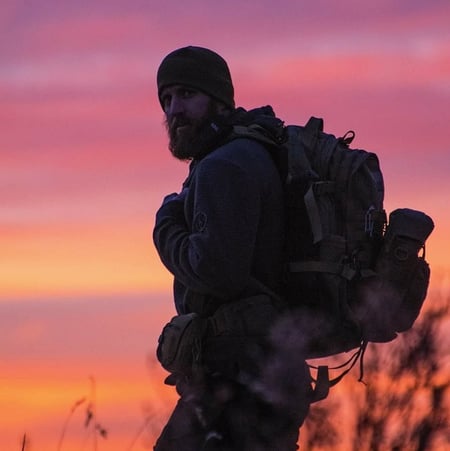
Building your own survival kit is a wise decision that can greatly increase your chances of surviving in emergency situations. While pre-made survival kits can be helpful, customizing your own kit to fit your specific needs and circumstances is the best way to ensure that you have everything you need to stay safe and healthy.
However, even the best survival kit is only as good as the person using it. That’s why it’s also important to invest time and effort into receiving formal survival training. By learning essential survival skills such as first aid, navigation, and fire and shelter-building, you can better utilize your survival kit and make informed decisions in high-stress situations.
In short, building your own survival kit and receiving formal survival training go hand in hand. By doing both, you can be better prepared to handle whatever challenges come your way and increase your chances of survival in emergency situations.
Did you like these survival tips? Check out more tips and trick on our Wilderness Survival Tips page.
If you are looking for hands on training to learn more about wilderness survival and want to take months if not years off of your learning curve, I suggest you check out our 5 Day Outdoor Survival Basics 101 class!
#survivalskills #survivalgear #wildernessculture #outdooreducation #wildernesssurvival
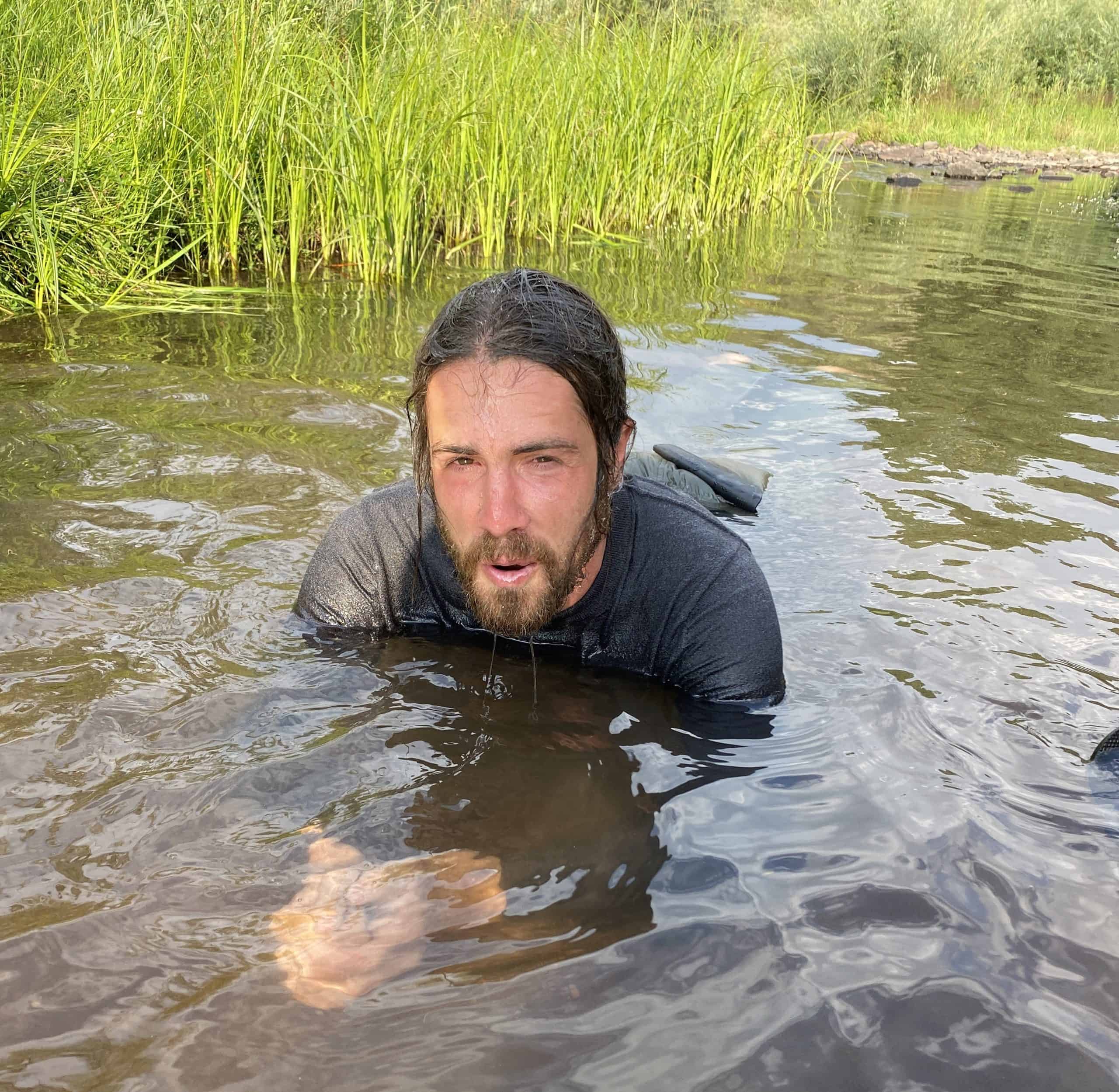
Water is both friend and foe. Even though sips from a cold spring can be refreshing during a hike, being immersed in water can be dangerous for...

Is all the information we pack into the backwoods as helpful as we think? Colorado is one of the most adventurous states in America. No matter what...

1 min read
I was asked by Peter Betts of The Survival Hacks, to contribute my opinion of the top 3 items to put in a bug out bag. I don’t carry a bug out bag...